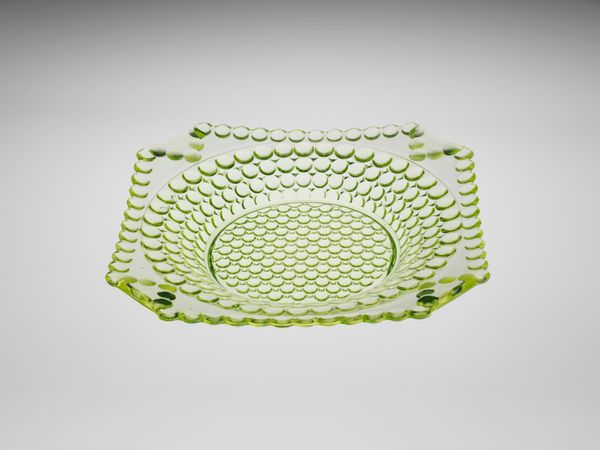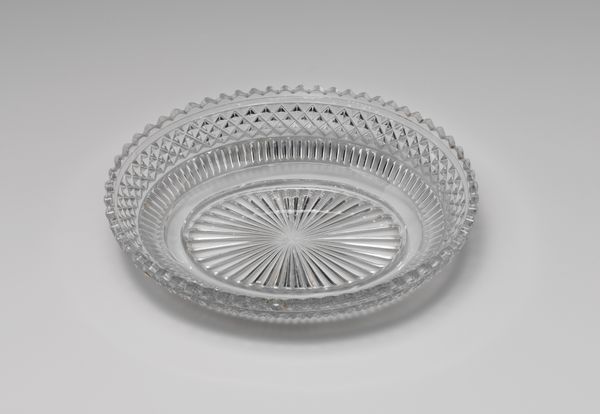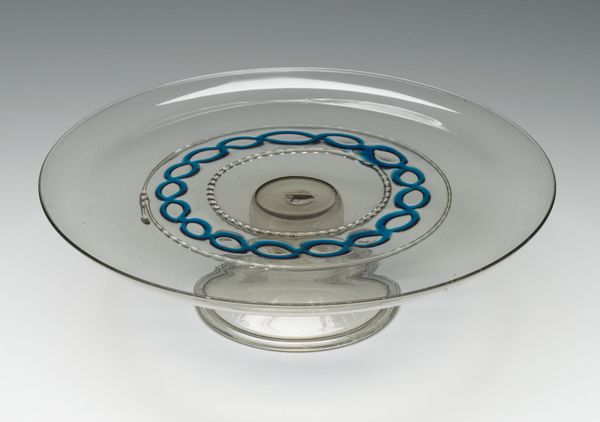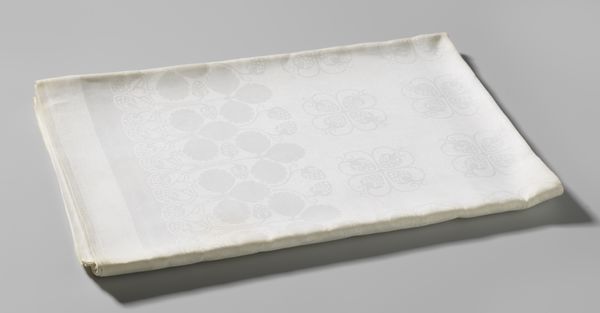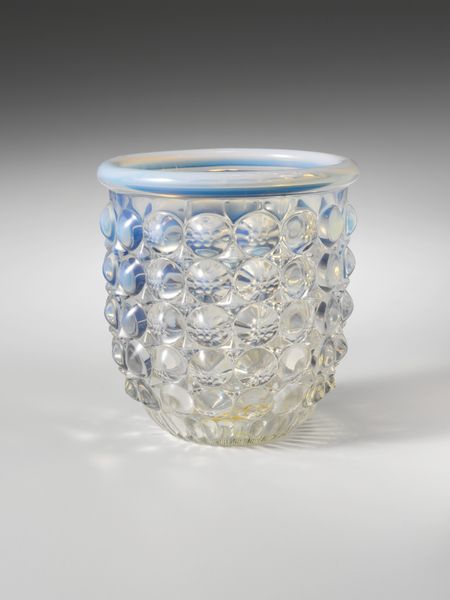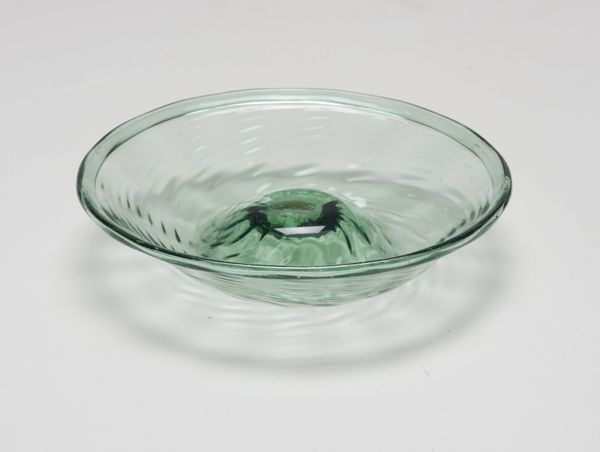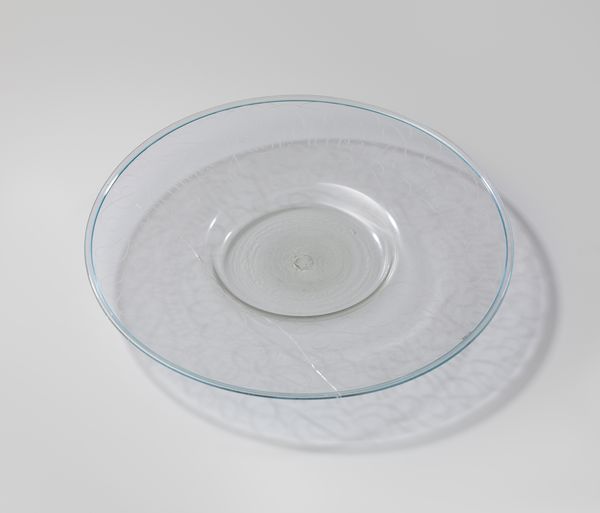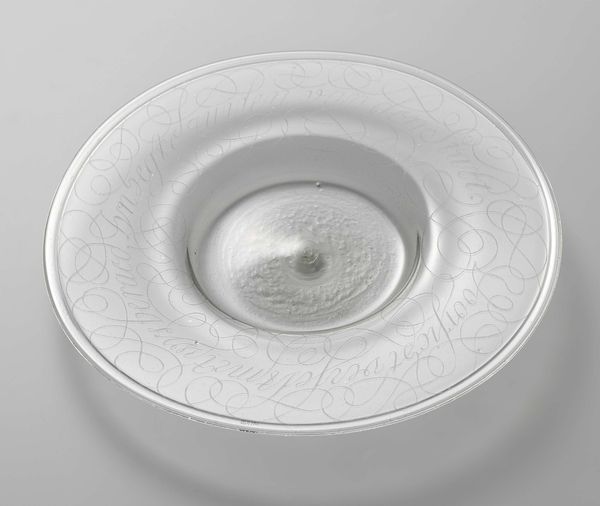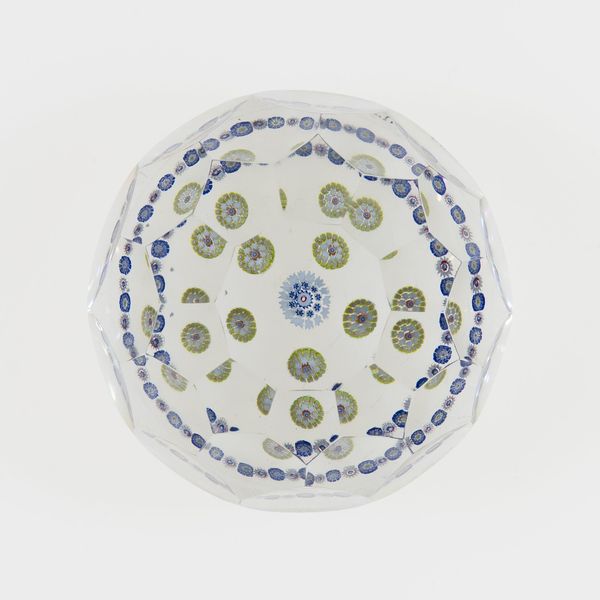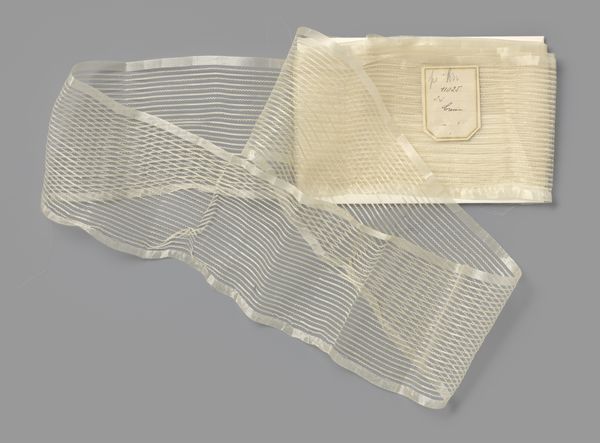
ceramic, glass
#
ceramic
#
glass
#
decorative-art
Dimensions: Diam. 6 1/2 in. (16.5 cm)
Copyright: Public Domain
Editor: So, this “Plate,” crafted sometime between 1870 and 1890 by Adams and Company, is made from ceramic and glass and currently resides here at the Met. The pale green hue gives it an almost ethereal, delicate vibe. What's your take on it? What stands out to you? Curator: Oh, it’s utterly charming, isn’t it? Looking at it, I'm instantly transported to a sun-drenched Victorian tea party. Notice how the pressed glass creates this repeating bubble pattern— almost like cellular structures when seen under a microscope. It's simple yet captivating. But do you think this repetition serves just a decorative purpose, or perhaps hints at the era's burgeoning scientific fascination? Editor: That’s a fantastic point. The Victorian era was a period of immense scientific discovery. I was stuck on just the decorative, period kitsch element, frankly. But is it valuable because of its aesthetics, or historical context? Curator: I think it is both. These items mirrored society's aspirations for elegance, affordability, and a touch of whimsy during a time of rapid industrial growth. Think of it: suddenly, mass production could mimic handcrafted luxury, bringing art within reach of everyday folks. Also consider the glass. Editor: Ah, so there is the combination. A lovely thing made beautifully available. I love thinking about that combination of the practical, the historical and the beautiful combining together. Thank you for pointing this out to me! Curator: The beauty is how accessible those historical details actually are, if you simply open your eyes! Glad to provide another window to see the piece through.
Comments
No comments
Be the first to comment and join the conversation on the ultimate creative platform.
